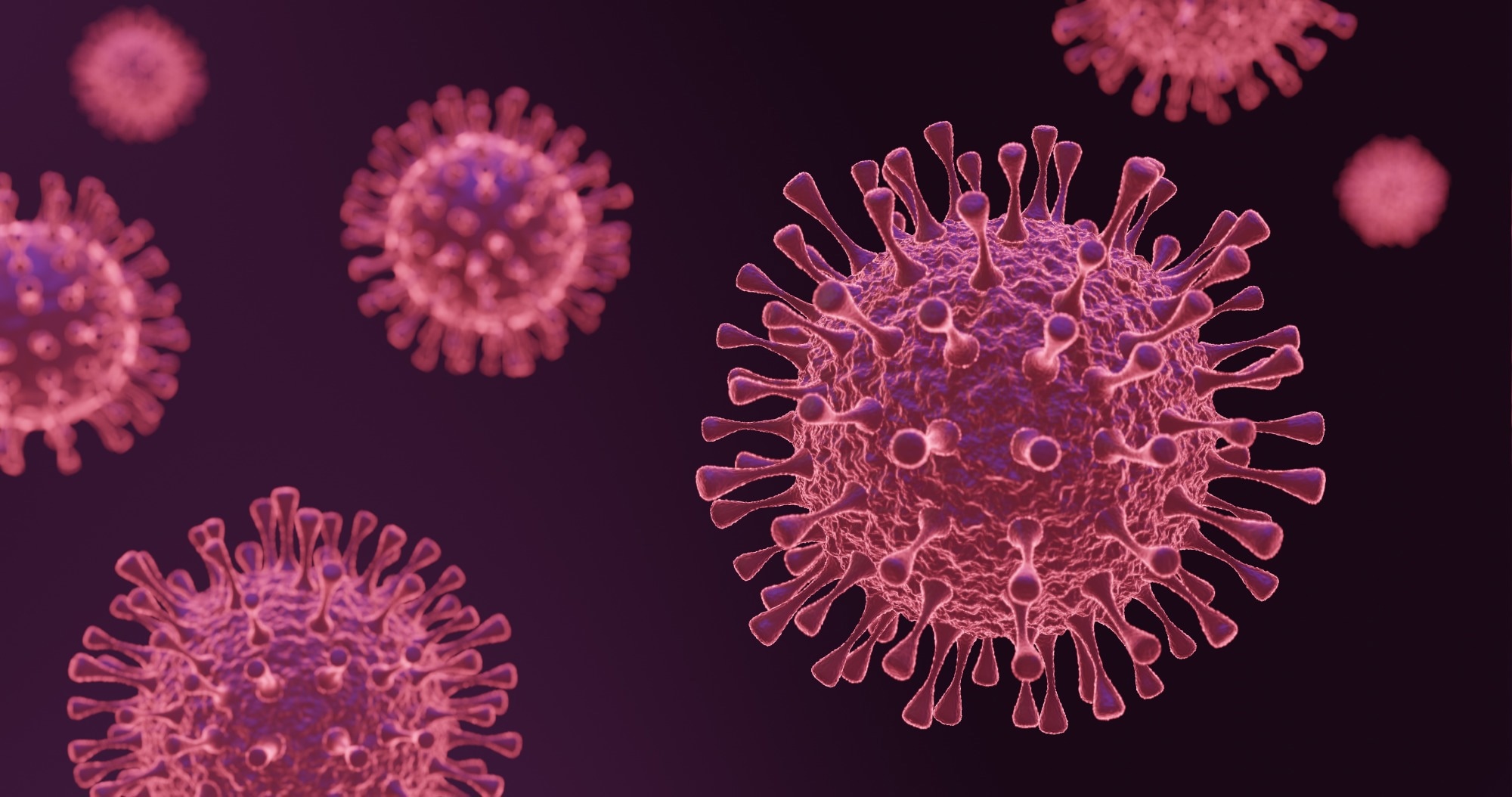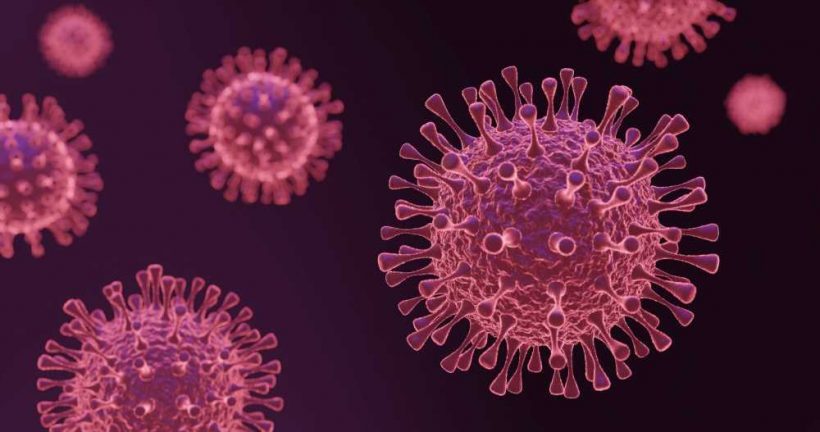In a recent study posted to the medRxiv* preprint server, researchers modeled the implications of severe acute respiratory syndrome coronavirus 2 (SARS-CoV-2) immunological evasion.

Background
The capacity of SARS-CoV-2 to evade human immunity using mutations that weaken antibody binding is a significant factor in high and unpredictable viral transmission. Knowledge regarding the propensity of emerging SARS-CoV-2 strains in driving infection waves, persisting in circulation, and co-circulating with established strains is crucial for comprehending and responding to this volatile period of the COVID-19 pandemic.
Immunity evasion has consequences for short- and long-term viral transmission levels, potential alterations in disease severity, and the efficiency of vaccines and treatments, particularly monoclonal antibodies. For the development of non-pharmaceutical and biological therapies, the ability to predict the trends of viral variants is of immense value.
About the study
In the present study, researchers employed an epidemiological modeling framework to provide a quantitative interpretation of the impact of immunity evasion on inter-SARS-CoV-2 strain competition and selection dynamics under endemic settings.
The team constructed a susceptible-infectious-recovered-susceptible (SIRS) model to assess the long-term and short-term transmission of emerging SARS-CoV-2 strains. The model consists of two parallel sets of compartments that represent the original strain and invading strain-infected individuals. The model considered disease transmission, immunity waning, and immunity induction because of exposure to either or both strains.
To simulate symmetric antigenic drift, the team set the cross-immunity of the native strain in response to the invading strain (COvI) and that of the invading strain in response to the native strain (CIvO) as equal. In the scenario with a shorter immunity duration, it was assumed that there existed complete cross-immunity among two strains; hence, no person can be immune to two strains simultaneously.
Initial circumstances for the model were established so that the original strain was in an endemic steady state, where the proportion of active infections remained constant. In order to ascertain the distribution of steady-state individuals within each compartment, the simulation was performed for 10,000 days without the invading strain. The team utilized the model to evaluate the capacity of an invading strain to infiltrate and elicit a transmission wave in the short term and the effect of an invading strain on transmission trends in the long term. In the short term, an outbreak was considered a success if the infected individuals exceeded their original value within the initial 180 days.
Results
Immunology eBook

The effect of viral invasion on the native viral strain transmission over a short term may be minor, while that of the invading strain can spread rapidly. This leads to a remarkable increase in the general short-term viral transmission essential for successful invasion situations relative to unsuccessful invasions, constituting the baseline transmission noted for the original strain. Higher transmissibility observed for the invading strain, along with mutual immunological evasion, leads to the propagation of greater transmission waves. The team noted that in the presence of symmetrically low cross-immunity, long-term transmission is the highest, which results in the co-circulation of viral strains. As cross-immunity levels decline, strain competition also decreases.
Succession is rare when immune evasion is completely symmetric, but unilateral immune evasion supports succession, particularly if the invading strain's intrinsic reproductive number (R0) is either equal to or more than the native strain R0. However, the exposure required for a successful invasion is similar to that of the mutual symmetric immunity evasion situation concerning extinction and co-circulation of the original strain.
Following the emergence of an invading strain, the short-term transmission trends in the asymmetric situation are comparable to those observed in the symmetric situation. Furthermore, the nature of the immunity associated with the invading strain differentiates the two scenarios. Long-term, the immunity produced by the invading strain inhibits the capacity of the native strain to spread, resulting in its extinction. This leads to a decline in pre-existing strain's transmission with a restricted advantage over the invading strain unless the invading strain exhibits a weaker dominant position. Additionally, strong cross-immunity induced by an invading strain in response to a pre-existing strain did not display any considerable influence on the global, long-term transmission of an infectious illness.
Conclusion
The study findings demonstrated that at the present stage of the COVID-19 pandemic, viral evolution is a crucial factor in determining transmission rates since invasion events are likely to increase widespread transmission in the future. The study highlighted the importance of early data describing antibody evasion and immune responses to developing variants in developing SARS-CoV-2 vaccines and other mitigation measures. The researchers also believe that the findings indicate that the emergence of SARS-CoV-2 serotypes is a potential extra risk connected with the current public health policy.
*Important notice
medRxiv publishes preliminary scientific reports that are not peer-reviewed and, therefore, should not be regarded as conclusive, guide clinical practice/health-related behavior, or treated as established information.
- Catherine Albright, Debra Van Egeren, Aditya Thakur, Arijit Chakravarty, Laura White, Madison Stoddard. (2023). Antibody escape, the risk of serotype formation, and rapid immune waning: modeling the implications of SARS-CoV-2 immune evasion. medRxiv. doi: https://doi.org/10.1101/2023.01.25.23285031 https://www.medrxiv.org/content/10.1101/2023.01.25.23285031v1
Posted in: Medical Science News | Medical Research News | Disease/Infection News
Tags: Antibodies, Antibody, Coronavirus, Coronavirus Disease COVID-19, covid-19, Evolution, immunity, Pandemic, Propagation, Public Health, Respiratory, SARS, SARS-CoV-2, Severe Acute Respiratory, Severe Acute Respiratory Syndrome, Syndrome

Written by
Bhavana Kunkalikar
Bhavana Kunkalikar is a medical writer based in Goa, India. Her academic background is in Pharmaceutical sciences and she holds a Bachelor's degree in Pharmacy. Her educational background allowed her to foster an interest in anatomical and physiological sciences. Her college project work based on ‘The manifestations and causes of sickle cell anemia’ formed the stepping stone to a life-long fascination with human pathophysiology.
Source: Read Full Article
